The pandemic has accelerated the high street’s decline. Is government support the answer, or does the concept need a wholesale rethink?
It was 40 years ago that Coventry band The Specials sang about ghost towns. At the time, the song was seen as a comment on urban decay and deprivation in inner cities. But it could just as well be an anthem for the Covid-19 era.
The latest statistics around the high street make for alarming reading. The constant cycle of lockdowns has crippled footfall, which reached an all-time low last May, when the British Retail Consortium reported a 77.8% year-on-year decline.
That’s had an immediate effect on occupancy levels. The shop vacancy rate stood at 13.7% in Q4 2020, according to the BRC – 1.6 percentage points higher than the same point in 2019.
In essence, the mass closure of non-essential retailers has pushed vast numbers of consumers towards online shopping, and left the nation’s high streets emptier than ever.
“What Covid has done is, it’s made 10 years of change happen in 10 months,” says Mark Robinson, chair of the government-commissioned High Streets Task Force. “That is really quite brutal and that’s the reality we find ourselves in now.”
Robinson foresees “really tough” times ahead. And food retailers on the high street, although safer than most forms of retail, are by no means immune from the effects of dwindling footfall and boarded-up spaces. Because no one visits a ghost town.
But all is not lost. Crucially, Robinson and other experts believe the high streets can still have a viable future if they adapt to the needs of their local communities.
So what needs to happen to help the high street get back on its feet? What challenges will it face in the recovery period, and how can it overcome them? And after all this, what will the future high street look like?
A high street in decline

13.7% high street vacancy rate in Q4 2020
17.3% shopping centre vacancy rate in Q4 2020
47% increase in number of vacant units in the City of London from 2019 to 2020
68.3% year-on-year decline in high street footfall in February 2021
4.9% decline in retail sales volume in the three months to January 2021
35.2% proportion of spend that went online in January 2021, the highest on record
Sources: BRC, ONS
Amid all these startling figures, it’s important to note that high streets were facing serious problems well before coronavirus entered the national lexicon. Robinson points to the creation of his task force in 2019, before mass shop closures came into the equation. That came off the back of a landmark report on the high street by John Timpson in 2018, which called for a fundamental change in approach to make town centres “a place people want to be”.
And it was hardly the first review to delve into the issue of dwindling footfall and spend. Retail guru Mary Portas penned her report in 2011, which argued that the high street could only survive by “recognising what’s happened and delivering something new”.
The pandemic has simply made the problems identified in these reviews even more pressing. “Covid has accelerated what was already happening,” says Bill Grimsey, a retail veteran and high street specialist who has himself written reviews on the subject.
The migration towards online shopping is, of course, one of these issues. “We predicted 30% of spend would be online by 2030, and Covid took it up to about 40% at one stage,” says Grimsey.
ONS statistics showed online transactions had reached an all-time high in January, when they accounted for 35.2% of all spend And Kyle Monk, director of insight at the BRC, believes that level is unlikely to fall much once coronavirus restrictions are lifted.
“They say it takes weeks to form a habit and we’ve had nearly a year of this – for eight months of the last 12, we’ve had some restrictions in place – so this behaviour could be sticky for some time,” he says. If not forever.
This new reality has served to highlight another long-standing problem: business rates. The system has long been criticised for failing to recognise the shift to online spend, taxing the retail sector too heavily, and relying on outdated property values. “We’ve been saying business rates are broken for years now,” says Monk.
The problem was solved – temporarily, at least – by the government abolishing business rates during the pandemic. That will soon come to an end, though. In the latest Budget, the government said the full holiday would end on 30 June (though there is 66% relief, with a cap, for the rest of the financial year).
That retailers will suddenly have to pay rates again, just as they are starting to reopen, could undermine efforts to revive high streets. What’s worse, the planned review of the business rates system has been pushed back from spring until autumn this year – which means there will be a long wait for any real change to the way the tax is calculated.
Vivienne King, CEO of real estate company Revo and chair of the Shop Keepers Campaign, is worried. “We’re concerned the review has been postponed, which means retailers will have to wait that much longer to have to seriously consider if they can continue in operation with business rates as they are, or whether we will see a reform that involves a significant cut in rates payable.”
A sweeping reform is vital, says King, who points to a survey of 400 property experts and advisers conducted by Revo and Lambert Smith Hampton last year. Half of respondents named high business rates as a key challenge. That was only second to the threat posed by online shopping, cited by 70% of respondents.
So under the Shop Keepers Campaign, King is calling for immediate relief in the form of extending the full business rates holiday until September, and keeping rates at just 50% until a wider revaluation in 2023. That is crucial considering the business rates multiplier is 51p in £1. A more realistic number, she says, is 30p.
In the longer term, King wants a complete rethink. “What we need is for the government to recognise the stress on bricks-and-mortar operations, and particularly the stress being caused by business rates,” she says. “We need a long-term sustainable reform that would give business a chance in our town centres.”
Her calls are echoed by many others in the industry. “Serious steps should be taken to continue the relief indefinitely and move towards levelling the playing field with online retailing,” says Alfred Bartlett, head of the retail & leisure group at property and planning consultancy Rapleys.
Looking ahead, he wants to see a comprehensive review of business rates “to try and move away from linking rates to historic rental values, which then apply in vastly different economic climates”.
Bartlett believes that change should come alongside incentives to stimulate the recovery of the high street. “I believe incentives should be given to developers to invest in the regeneration, or rather resurgence, of town centres,” he says.
He argues those incentives could also extend to startup retailers “in certain key sectors” to give them the confidence to set up stall in town centres.
For the moment, the government is simply in crisis mode. In the latest Budget, it unveiled plans to inject cash into the high street through one-off grants and funds. That includes the £4.8bn Levelling Up Fund, designed to support town centre and high street regeneration, and the Restart Grant scheme for businesses most badly affected by Covid-19, which will be available to retailers. Those measures have been widely welcomed – with a caveat.
“Positive measures from the Budget include the restart and lockdown grants, business rate holiday and the extension of furlough. These are all bound to help but only in the very short term,” says Keith Hardman, head of development and strategic advisory at commercial real estate company Cushman & Wakefield.
“Large as the funding numbers seem and welcome as the investment is, the scale of government financial intervention needs to be considerably greater,” he adds.
“The real challenge in too many instances is how to bring about the scale of regeneration needed to arrest the spiral of decline before this becomes irreversible.”
On the other side of the coin, Robinson of the High Streets Task Force says the high street can’t afford to rely too heavily on government funding.
“What is very clear is we can’t expect government to do all the heavy lifting,” he says. “We have to create an environment where once again the private sector feels more comfortable about investing in our town centres, and we’re not there yet.”
What the government is doing
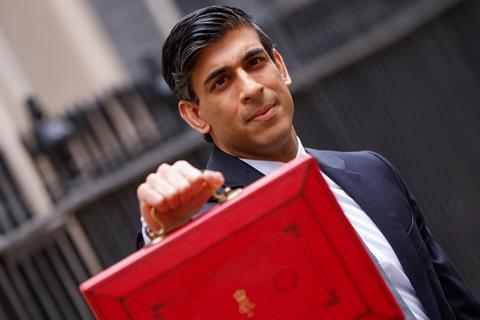
The government unveiled a raft of financial measures to stimulate the high street in this month’s Budget. These form part of the government’s wider attempts to steer beleaguered town centres through the Covid-19 crisis. So what government help is available?
Business rates holiday: Since the start of the pandemic, the government has offered business rates relief to 750,000 eligible retail, hospitality and leisure businesses. The relief has been extended across several consecutive three-month periods. In the latest Budget, Rishi Sunak announced the full holiday would be extended until end of June. But there will be 66% relief on rates until the end of March 2022, capped at £2m relief for non-essential retailers and just £105,000 for essential retailers.
Restart Grant scheme: In a bid to help the hardest-hit businesses recover, the Treasury revealed a Restart Grant scheme in the latest Budget. The £5bn fund will offer a one-off cash grant of up to £18,000 for hospitality, accommodation, leisure, personal care and gym businesses in England, and will be allocated based on application.
Levelling up fund: The £4.8bn UK-wide Levelling Up Fund was a big talking point of the Budget. Local areas will be able to submit bids for the fund, which is designed to “support town centre and high street regeneration, local transport projects, and cultural and heritage assets”. The sum may sound large, but it has attracted some controversy from critics, who argue it has favoured Tory seats and failed to make up for the ongoing slash to local budgets.
Future High Streets Fund: In December, the government announced it would invest £830m from the Future High Streets Fund into 72 areas in England to “deliver ambitious regeneration plans”. Plans include a £17.9m investment to boost Worcester town centre by renovating the Scala Theatre and Corn Exchange, and a £25m investment to modernise Swindon town centre.
Department store surplus
For him, that means moving away from the traditional town centre structure. No longer can department stores be the focal point of every town, for example. Although Robinson believes there is some future for the format, the struggles of BHS, House of Fraser and John Lewis, show there are simply too many at present, he says.
“We’ve anchored our retail spaces with department stores,” he says. “They didn’t do that in France or in Germany – they have a 20th of the department stores we have.”
“Department stores are in many ways uniquely vulnerable,” Robinson adds. “Where’s the one place you go to buy everything now? The internet.”
The secret to making high streets more appealing in the online age is moving away from this tried-and-tested “clone towns” model, he says.
“People are always asking ‘what is the new high street going to look like?’ And it’s a bit of a dumb question because we’re not going to create more clone towns.
“Some places will thrive with retail, some will have work space, some will have retirement living, but it won’t be all the same.”
With that in mind, a group of 150 experts from the High Streets Task Force will shortly go into selected towns – allocation will be “very much based on need” – to help revamp their centres. They will take into account the needs of the local population and the town’s strengths to develop a collaborative plan.
This more individualistic vision means retail will no longer be a default focus. That means accepting an uncomfortable truth: some retail units will close.
“There are too many shops,” says Kathryn Wood, partner in the development team at Cushman & Wakefield. Just how many surplus units exist is up for debate, but it is no small number. “It’s very specific to the local demographic, but around a 30% reduction in shops is a reasonable estimate,” Wood adds.
“Everything is on the table at the moment, and landlords are keen to find options, whether that’s hotels or offices or leisure”
That figure may sound terrifying – and it is a devastating prospect for many retailers and indeed landlords. However, Wood is clear that it doesn’t signal a death knell for high streets. “It’s not doom and gloom by any means,” she says. “It’s about looking at what complementary elements to retail can come together to revive our town centres.”
Her work to repurpose retail sites serves to highlight the many different forms those complementary elements can take. In the case of former department stores, they can be an ideal space for big-budget projects. Wood points to the planned development in Wandsworth Southside Shopping Centre, for one.
Leisure operator Gravity has taken on the former Debenhams site with the aim of turning it into a four-floor hub with facilities such as an electric go-karting track, augmented reality bowling and a crazy golf course, alongside drinking and dining outlets.
Similarly ambitious is the Market Hall West End project, which saw the former BHS Oxford Street site turned into the UK’s largest food hall. “I think they’ve done really well with that,” says Wood. “These are quite deep spaces and there’s not a lot of natural light. So they did a really good job in terms of getting light in, putting a food court in the centre.”
But retail conversions don’t need to be big bang attractions to work. Residential projects, flexible working spaces and hotels are all valid uses if they meet the needs of the local population. Even the likes of Deliveroo and Just Eat are considering high street locations for their dark kitchens, she says, due to their central position.
“Basically everything is on the table at the moment and landlords are keen to find options, whether that’s hotels or offices or leisure,” says Wood.
New uses for the high street
Experts are united on one thing: the number of retail units on the high street will significantly diminish in the future. Those units are likely to be replaced by a range of different businesses, depending on the needs of the individual town or city. Here are some alternative uses that are already starting to feature more heavily on the high street.

Shared working
If Covid has resulted in one permanent change, it’s the way we view the office. Travelling long distances to the workplace five days a week seems unlikely for many. But workers are still likely to crave a social atmosphere, which is where shared workspaces such as WeWork come in. Many believe these outlets will be a growing feature of the high street in future.
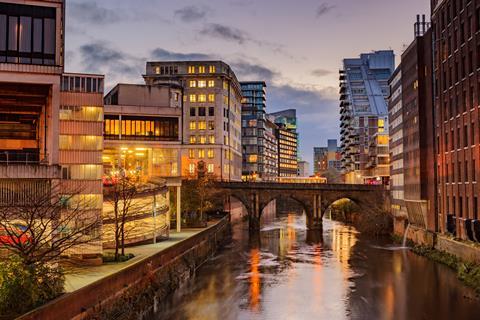
Residential
The need for more housing isn’t going anywhere. And vacant units on the high street could represent a prime location, particularly for student living and retirement homes, says Kathryn Wood, partner in the development team at Cushman & Wakefield. However, she stresses any new developments “need to be done sensitively and in partnership with the council”.

Leisure
Late last year, plans emerged for the former Debenhams in Wandworth’s Southside shopping centre to become a big leisure destination with go-karting and bowling facilities. Wood at Cushman & Wakefield believes this kind of facility could become a commonplace feature on the high street, to tempt in consumers without relying on retail.

Food and drink
Food and drink could soon play an even more pivotal role on the high street. New food halls were emerging on to the scene before the pandemic, such as the Market Halls in London or Kommune in Sheffield. In future, retail veteran Bill Grimsey believes we will start to see “fresh food emporiums” that include local produce retailers and food-to-go stalls.
A united approach
Arguably, though, the decision shouldn’t just be down to the landlord. Because what’s best for the individual isn’t necessarily best for the town as a whole. That’s a point illustrated by Iceland’s property and acquisitions director Simon Anderson, who berates the lack of collaborative working.
“I think what a lot of people forget about is that high streets are in very fragmented ownerships,” he says. “So getting people together, where you might have lots of disparate ownerships with disparate interests, is difficult because people aren’t pulling in the same direction.”
That need for a united approach is echoed by Grimsey. He has written various reports on how to revamp the town centre, which all promote one core idea: repositioning high streets as ‘multifunctional hubs’ that serve the needs of the local community.
That means high-level, rather than individual, thinking about what the town needs. For Grimsey, it’s almost a case of treating each high street like a brand in its own right. “We need to bring everyone in the community together and say ‘this is our town and this is what we stand for’,” he says. “And to do that, they need an overall plan rather than dealing with bits of space that open up because a BHS closes. Otherwise it becomes reactive and led by developers.”
That why local leadership is another key tenet of Grimsey’s recommendations. He argues that local authorities must lead the future of their high streets by producing an overall vision, and working collaboratively with other stakeholders to make that a reality. The government agrees, arguing local authorities have a “critical role to play” in the high street’s future.
“I think the missing ingredient is great local leadership,” says Grimsey. “Chief execs of local authorities need to be more like [former Tesco CEO] Dave Lewis. They need to be commercial and to get people together, to work with politicians and work with the community, to get a plan and then go out and finance it.”
These plans need to avoid being constrained by the financial resources currently available. “In all the talks I do around the country, I say to local authorities don’t start with money. Because if you start with what you think you can afford, you won’t do anything,” he says. “Start with a plan. Make it long term – 20 or 30 years – and courageous and ambitious, and be aware of the need for your town to compete with other towns.”
In some cases, that means thinking beyond what gives you the highest immediate returns. In Stockton-on-Tees, for example, the old Globe theatre had become a Mecca Bingo site. Once Mecca moved out, local leaders decided to think about what was best for the town rather than simply seeking out the highest bid. The result is a restored Globe theatre that is sold out for its planned opening night later this year.
This kind of thinking can put an end to the “one-size-fits-all” mentality that has plagued Britain’s high streets, Grimsey argues.
Jonathan House, devolved and local government advisory leader at PwC, shares a similar vision. As a former CEO of Cardiff City Council, he knows the power of strong local leadership – and believes it will be vital to the success of high streets. “What works in Cirencester won’t necessarily work in Harrogate. This won’t be a cookie-cutter approach,” he says. “The model won’t be about cloning towns because that won’t work for communities or businesses.”
So in essence, there is no simple answer to what the new high street will look like. In fact, the lack of one single vision could be exactly what transforms high streets from Covid ghost towns into the exact opposite: community hubs with a new lease of life.
Revamping the department store
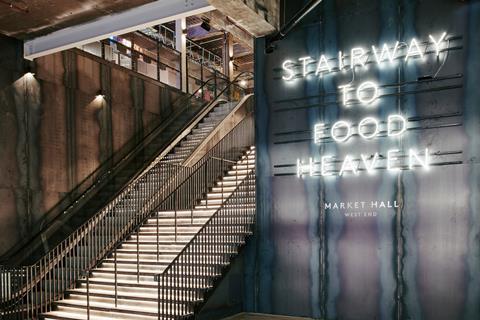
Market Hall West End
Formerly: BHS Oxford Street, London
Opened: November 2019
What it is: Earning the title of the largest food hall in the UK, Market Halls West End covers 35,000 sq ft over three floors and seats more than 1,000 people. The former BHS flagship store houses 11 independent food traders – from Japanese eatery Yatai to barbecue specialist Hotbox – and four bars. The facilities include a covered and heated roof terrace and three dedicated events spaces.
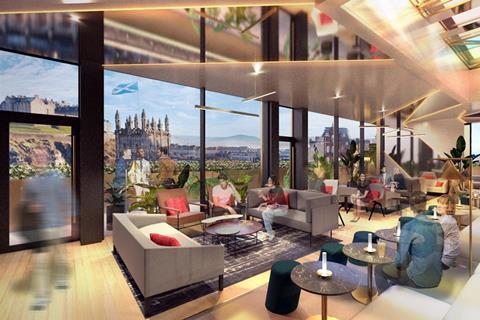
The Johnnie Walker Experience
Formerly: House of Fraser Princes Street, Edinburgh
Opening: Summer 2021
What it is: ‘Explore the flavours of Scotland in the heart of Edinburgh’, urges the site for this experiential venue. Although whisky is naturally central to the premise – and real dram-lovers can book a personalised tasting in a Sensory Tasting Room – food is equally important. There’s a rooftop bar serving “Scottish small-bite cuisine” and a private dining room serving local specialities.













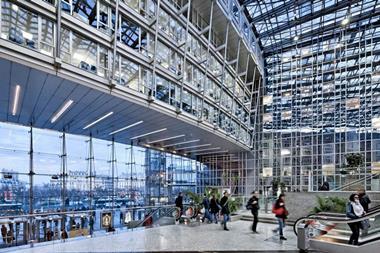


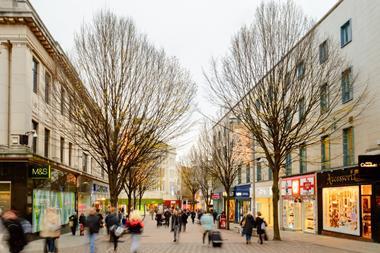








No comments yet